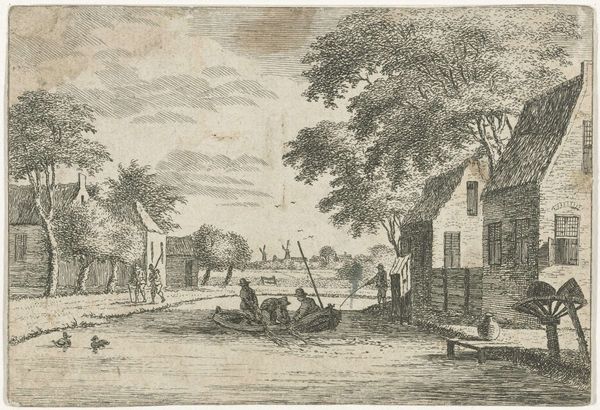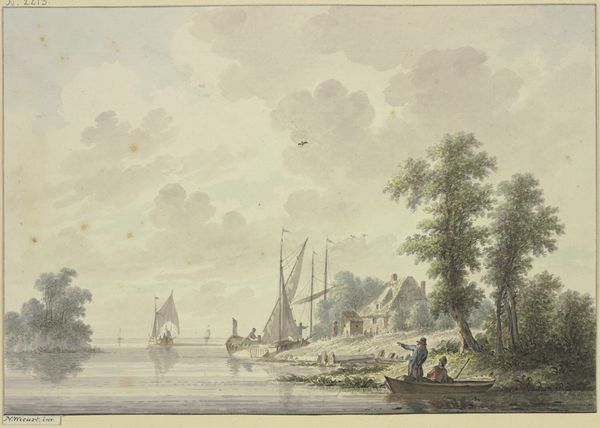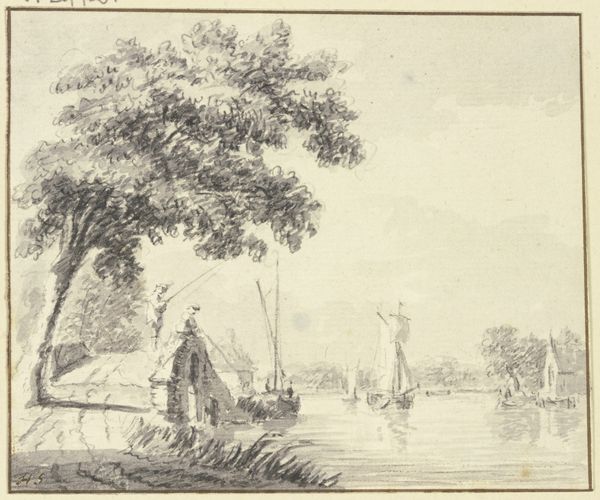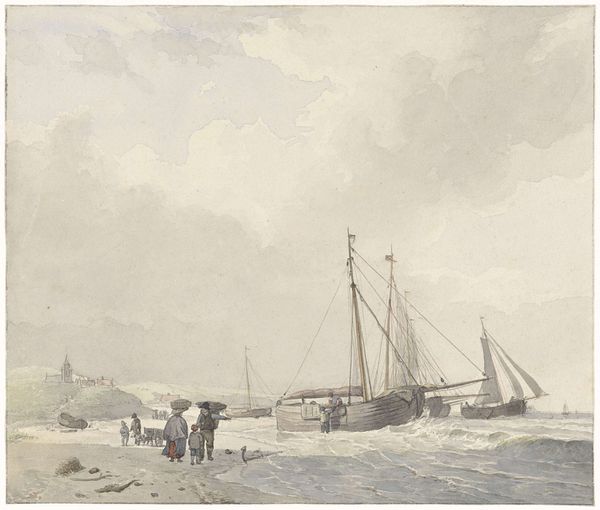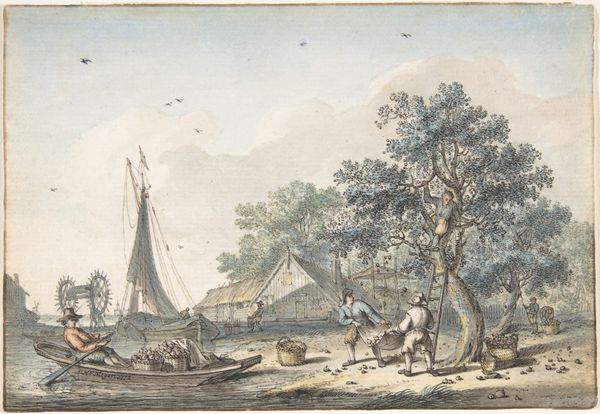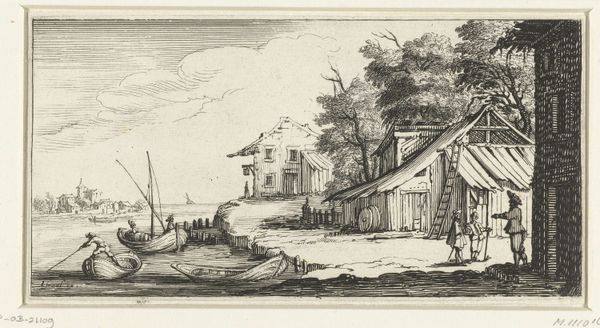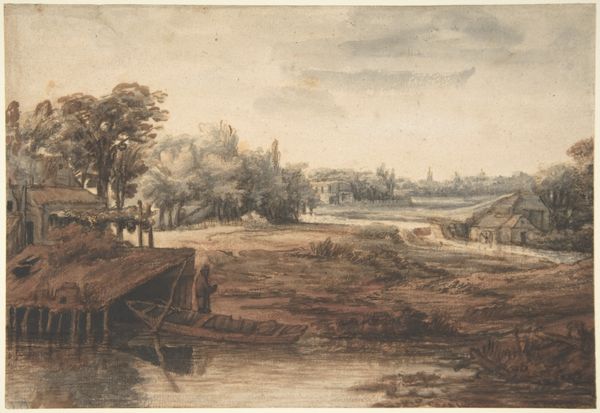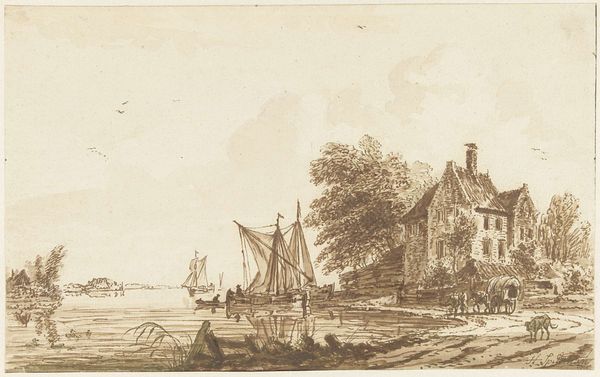
watercolor
#
dutch-golden-age
#
landscape
#
watercolor
#
genre-painting
#
watercolor
Dimensions: height 205 mm, width 324 mm
Copyright: Rijks Museum: Open Domain
Curator: The artwork before us, attributed to Jan Hulswit and likely created sometime between 1776 and 1822, is entitled "Landschap met bruggetje en huis aan weg langs een water"—Landscape with a bridge and house on a road alongside water. It’s a watercolor piece, characteristic of the Dutch Golden Age’s later period. Editor: It's...quiet, almost muted. The subdued color palette lends a melancholic air, don't you think? The soft washes of watercolor create a sense of stillness and contemplation. Curator: Indeed. These seemingly tranquil landscapes, ubiquitous within Dutch painting, were deeply entwined with burgeoning capitalist activity, namely agriculture. The land, rendered with such delicate skill here, represented both material and symbolic capital. Notice the figures populating the landscape—farmers, travelers; their stories intricately connected to their geographical and sociopolitical environment. The windmill, also, speaks to industry. Editor: The composition directs the eye cleverly: from the boat, past the figure sitting by the roadside, up to that imposing windmill dominating the background. It creates a visual hierarchy. And the light... the artist masterfully plays with light and shadow to evoke a certain atmospheric mood. Curator: These elements serve to subtly question—and in many cases, bolster—dominant ideological narratives. Jan Hulswit was working in a historical period during which labor practices and land rights were being reconfigured and renegotiated in the face of political reform and technological change. Even depictions of leisure or what seem to be objective reality must be understood as ideologically charged. Editor: You make an excellent point. The idyllic scene conceals complex realities of the time. All the lines and colors of which were specifically calculated in relation to each other and the picture as a whole to generate feeling. Curator: Ultimately, it is a testament to how landscape painting was a pivotal form for negotiating identity, place, and power within the shifting landscape of Dutch society. Editor: A peaceful facade over a potentially turbulent reality, expressed beautifully through artistic technique.
Comments
No comments
Be the first to comment and join the conversation on the ultimate creative platform.
